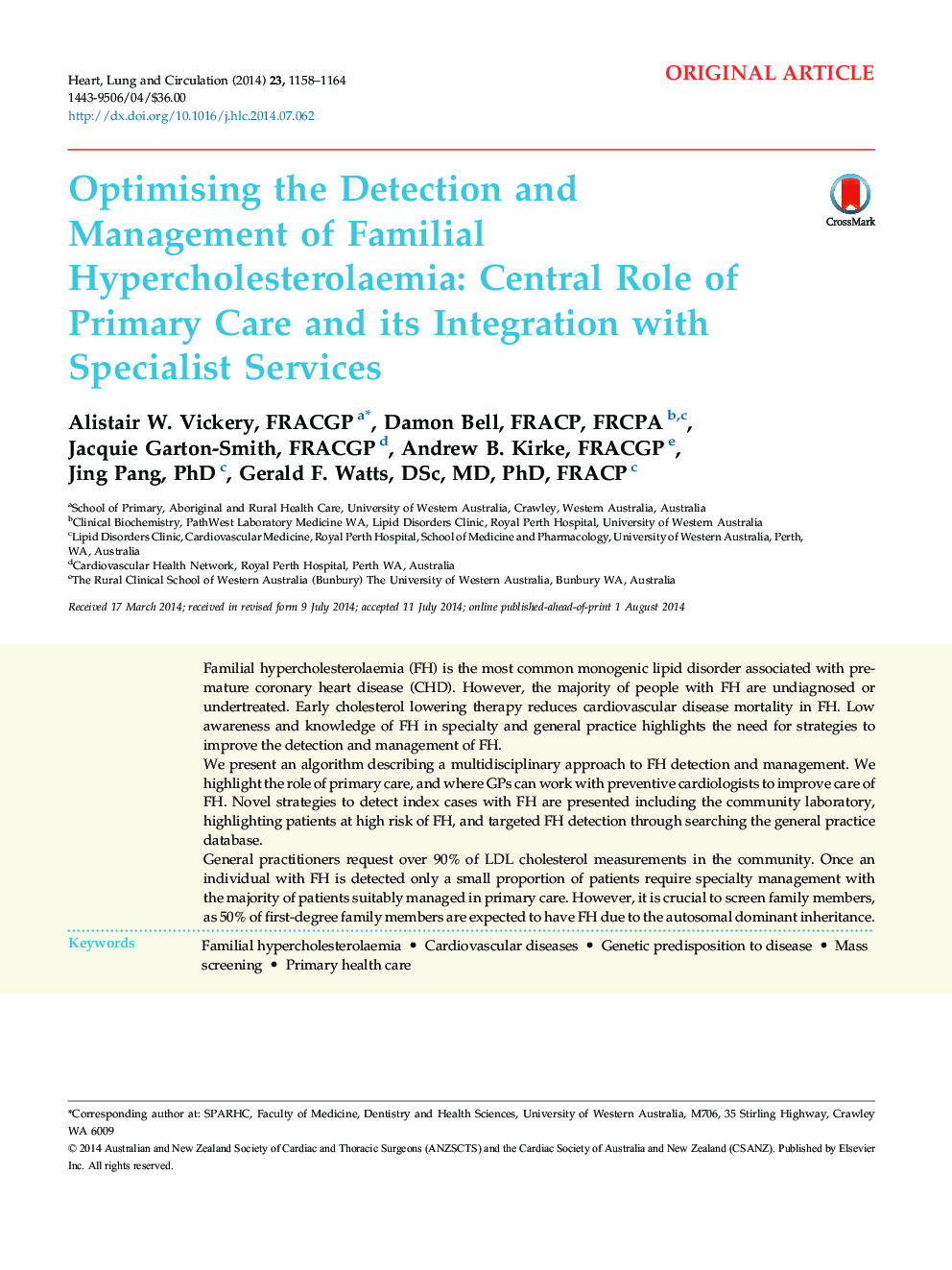| Article ID | Journal | Published Year | Pages | File Type |
|---|---|---|---|---|
| 2916908 | Heart, Lung and Circulation | 2014 | 7 Pages |
Familial hypercholesterolaemia (FH) is the most common monogenic lipid disorder associated with premature coronary heart disease (CHD). However, the majority of people with FH are undiagnosed or undertreated. Early cholesterol lowering therapy reduces cardiovascular disease mortality in FH. Low awareness and knowledge of FH in specialty and general practice highlights the need for strategies to improve the detection and management of FH.We present an algorithm describing a multidisciplinary approach to FH detection and management. We highlight the role of primary care, and where GPs can work with preventive cardiologists to improve care of FH. Novel strategies to detect index cases with FH are presented including the community laboratory, highlighting patients at high risk of FH, and targeted FH detection through searching the general practice database.General practitioners request over 90% of LDL cholesterol measurements in the community. Once an individual with FH is detected only a small proportion of patients require specialty management with the majority of patients suitably managed in primary care. However, it is crucial to screen family members, as 50% of first-degree family members are expected to have FH due to the autosomal dominant inheritance.
